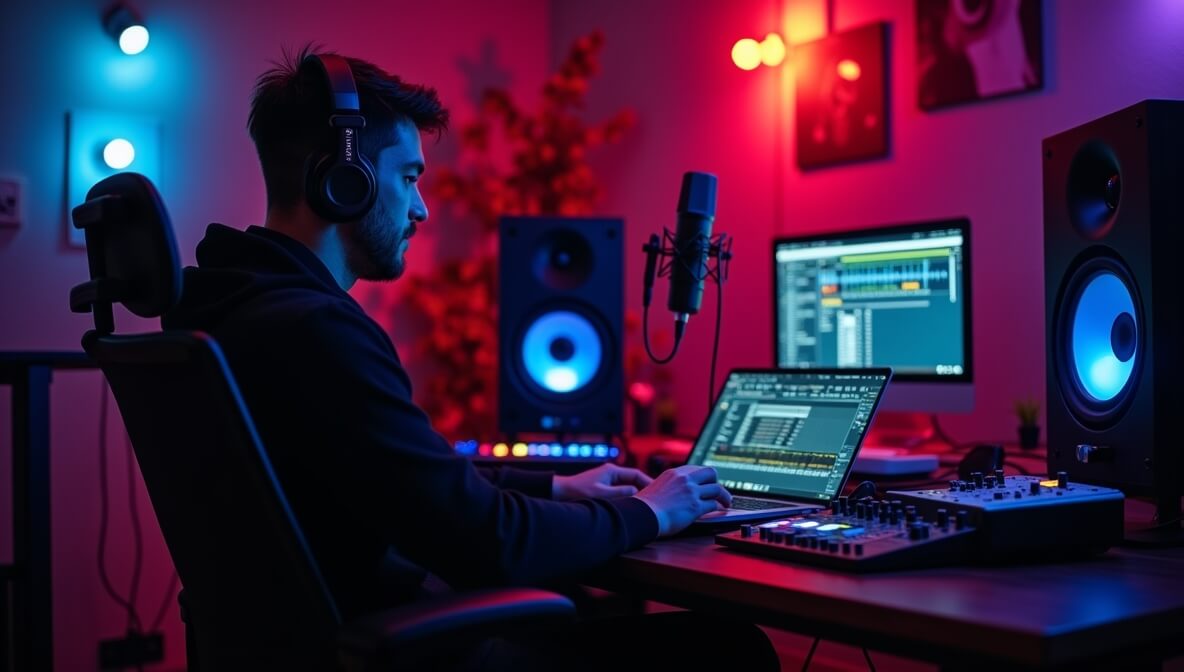August 12, 2025

Going viral may seem like catching lightning in a bottle — but behind most viral hits is a mix of musical craft, production quality, and strategic marketing. Today’s top industry experts understand that virality isn't luck alone; it’s intentional creation backed by insight. Here’s how to give your next song the best shot at blowing up.
At the heart of every viral hit is a memorable hook — the part fans hum, sing, and quote on TikTok. A great hook often combines catchy rhythm, emotional resonance, and a simple, singable melody.
To master this, you need more than intuition. Deepening your rhythmic awareness can help you shape better, tighter hooks (why understanding rhythm is crucial for every musician).
You should also train your ear to recognize intervals and tonal relationships that “feel right.” That natural feel-good factor is often a result of practiced listening (ear training exercises to hear chords and melodies).
The majority of viral tracks follow simple structures: verse–chorus–verse–chorus–bridge–chorus. Familiarity makes songs easier to follow, which increases replayability.
Each section should serve a purpose:
A clear structure also makes songs easier to remix, sample, or feature in social media content — all crucial to virality.
To elevate your composition, pair your structure with accessible yet emotionally charged chord progressions (understanding chord progressions) that give your track emotional depth without overcomplicating it.
Trends change fast — but understanding them is key. Viral songs often blend current genre flavors (like hyperpop, trap, or Afrobeat) with something distinctively personal.
That’s where your toolkit matters. If you’re producing, knowing how to use your digital audio workstation (DAW) efficiently lets you experiment and iterate faster (guide to choosing the right DAW).
It’s also essential to polish your sound with basic but powerful tools:
Virality often begins before the song officially releases. Build anticipation by:
Then, when you’re ready to release, make sure the song is on all major streaming platforms — properly tagged, high-quality, and timed for maximum visibility (music distribution explained).
Two audiences are better than one. Features, co-writes, and cross-genre collabs increase your reach and introduce your music to new communities.
When choosing collaborators:
Beyond just clout, collaborations often bring fresh energy and ideas that make the track stronger and more exciting.
Once your track is out, treat it like a project — analyze how people respond.
Key indicators of viral potential:
Adjust based on feedback. Sometimes the difference between a track flopping and one going viral is a 30-second hook video at the right time.
Yes, going viral involves luck — but luck favors those who prepare. If you create with intention, master the tools of production, and understand what makes listeners connect, you give your song the best chance to resonate.
Whether you're crafting a bouncy summer hit or a moody late-night anthem, these principles hold true:
Stay up to date with the latest tips, expert insights, product reviews, and step-by-step guides to help you grow, create, and succeed—no matter your industry or passion.